Tertiarm - low cost, 3d printed robot arm based on Ikea lamp
What does it do?
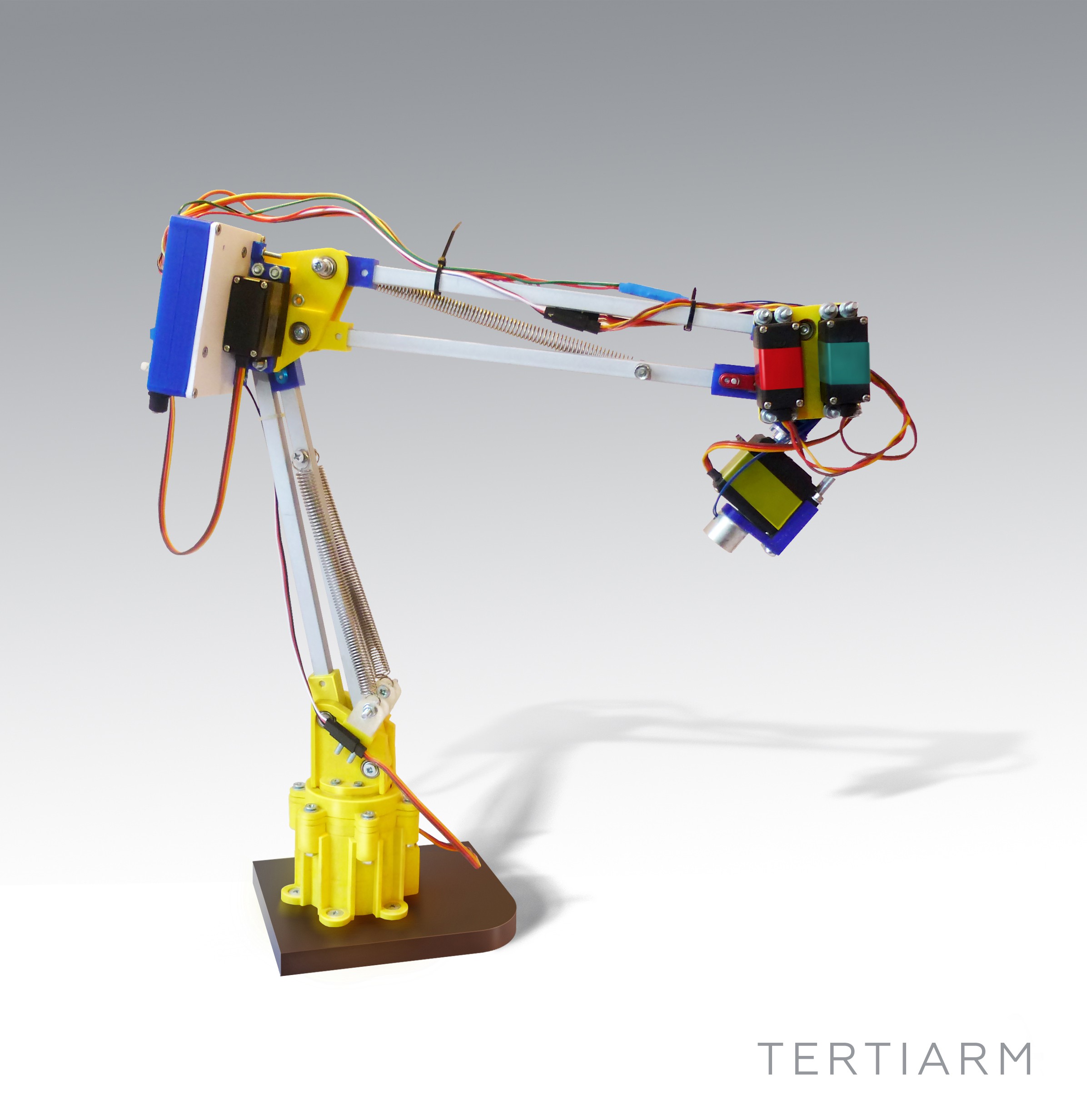



With books being replaced by electronic alternatives and sugary drinks in short supply, this custom locker has come to the rescue.
After a conversation with a few friends about an idea he had for a vending machine that fit entirely inside of a locker, high school student Blake Hawkins decided to actually make it a reality. His setup crams dispensing hardware for two types of highly-caffeinated soda, including an Arduino-connected coin acceptor and a spring to keep the locker closed between sales. The C-shaped cylindrical device that physically doles out the cans is quite clever as well.

No word on how school staff have reacted to his new in-school business, but the students have naturally been quite entertained and pleased about the new locker hardware. Hawkins even got to ask his girlfriend to the prom using the contraption with a custom can for her!
You can check out more of this build on its page. You may also enjoy these two DIY vending machines as well, which can be found here and here.

A traditional reflex bag is meant to help improve your punch accuracy and timing. However, Carl Gordon decided to make his a bit more interactive and gamified using an Arduino Uno.
As you can see in the video below, his setup adds four LEDs to the device to tell the user which side of the bag to punch, and an accelerometer to let the Arduino in the base of the stand know when it is actually hit. This means that the person using it has to further work on his or her movement skills, adding a whole new dimension to the workout.
Gordon claims that it’s “10x more fun to use and now feels like more of a game than an exercise!” You can find out how to build your own on the project’s Instructables page.
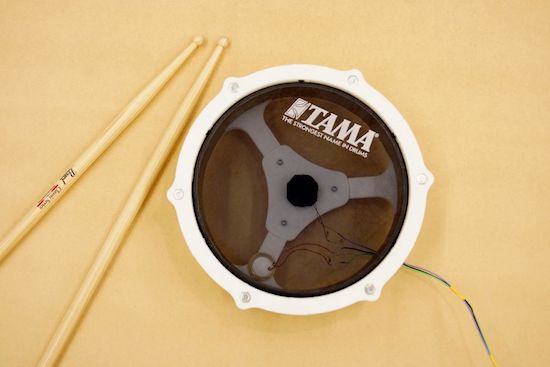
After making his first drum with a laser cutter, Ryo Kosaka redesigned it as a 3D-printed structure so more people could build it.
If you’d like to practice playing the drums, but would rather not disturb your family, roommate, neighbors, dog, etc., then an electronic version is probably a good idea. Since you’re reading our blog, making one would be even better!
Although details on how it was interfaced software-wise with the Arduino Uno aren’t included in his log, the drum itself looks quite good. It’s 3D-printed out of several individual pieces, which are glued together using thick paper to help hold everything intact. The sectioned design means that you only need a 120mm x 120mm print area to produce this 8-inch drum pad.
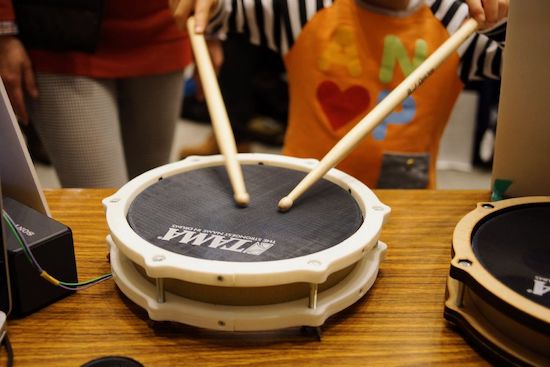
Kosaka also goes into how to set up the piezo sensor for drum use in his write-up, which should be quite useful for this design, or even something derived from it. You can check out the project page for more details as well as Thingiverse for the print files. Additionally, Kosaka recommends this Rockband controller to MIDI Instructable or this one featuring a homemade electronic drum kit.
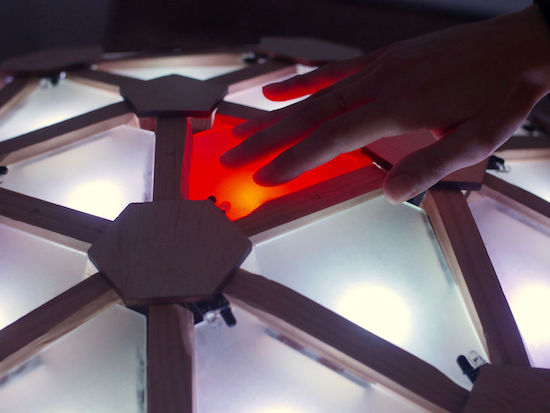
We’ve all seen geodesic domes in one form or another, whether as a modern experiment, as housing from a bygone era, or perhaps as a gigantic structure in Orlando (technically a geodesic sphere). Jon Bumstead apparently wasn’t satisfied with current dome options, and instead created his own, integrating elements from programmable LED tables to make it interactive.
The resulting build is quite spectacular. Each triangular section able to be lit up with an RGB LED, and further information is output to five MIDI signals in order to produce sound. This means that up to five people can play the dome as an instrument simultaneously. If that wasn’t enough, the Arduino Uno-based dome is programmed to play a version of Simon or Pong, and can be set up to display a light show!
I constructed a geodesic dome consisting of 120 triangles with an LED and sensor at each triangle. Each LED can be addressed individually and each sensor is tuned specifically for a single triangle. The dome is programmed with an Arduino to light up and produce a MIDI signal depending on which triangle you place your hand.
Pretty cool, right? Head over to the project’s Instructables page to see more, or if you’d like information on constructing the dome itself, check out Domerama.
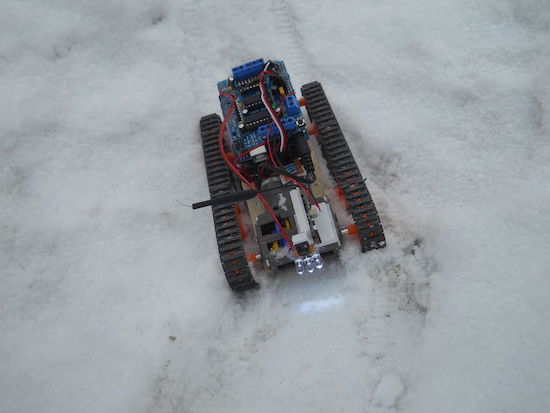
Whether you choose to control this vehicle with your mind or a joystick, the camera mounted on it will give you a new view of the world.
Maker “Imetomi” was inspired to create a tracked robot after he was able to salvage a camera off of a cheap drone. This became the basis of his FPV setup, which he fitted onto a little tracked vehicle. Although this would have been enough for most people, in addition to building a joystick-based controller, he also made it work with a brainwave headset.

Imetomi now has something that he can drive around virtually, spying on passersby, as long as it stays within the VR transmitter’s 50-meter range. Be sure to check out the video below, where the small bot shows of its impressive all-terrain capabilities, and read his Instructables write-up here.

If remembering to hit your foot pedal at the right time during shows is a challenge, this device will take care of it for you.
As creator Franco Molina points out, there’s a lot to worry about when playing guitar in front of an audience. Actually playing is one thing, but you have to pay attention to the crowd, move around on stage, make sure you don’t have any wardrobe malfunctions, and… hit a footswitch to change between clean and distorted channels when appropriate.
Molina’s device may not be able to help you with everything on that list, but by listing to a specially encoded ‘click track’ from a computer or MP3 player, it can automatically switch amplifier modes when appropriate. It does this by using an Arduino Uno along with an amp to listen to the track, then switch a relay to simulate a footswitch.
If you’d like to build your own, check out Molina’s Instructables project page!
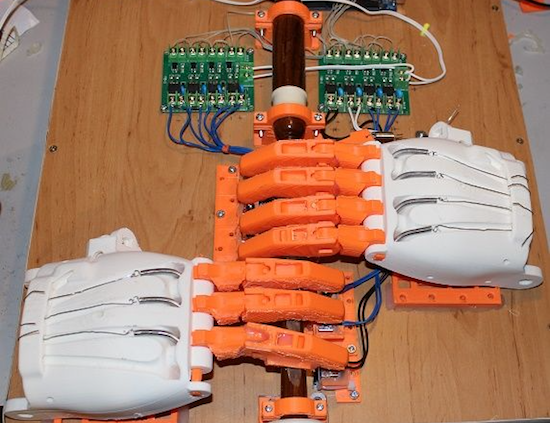
Using gigantic hands scaled up from a prosthetic design, “XenonJohn” can now hear the sweet sounds of Scotland whenever he wants.
Seeing this invention, you might note to yourself that most instrument-playing robots don’t actually bother to have realistic—if huge, at 171% normal print size—hands attached. Then again, you probably haven’t seen a robot configured to play the bagpipes.
The robot named Ardu McDuino plays the bagpipes, or rather the chanter part that is manipulated with one’s fingers, using actual prosthetic fingers to cover the holes. It also has a less-realistic “thumb” to cover a hole on the back.
Everything is controlled using an Arduino Mega via a bank of opto-isolated MOSFETs, along with solenoids to let it grip the individual air holes for music generation. You can read more about this project on its Instructables page!
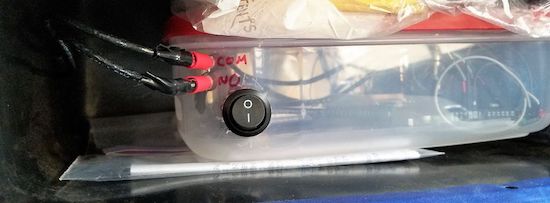
Sure, if you’re going to get a new ride, a model from the twenty-teens would be nice, but for hacking purposes, the simplicity of an older cars makes modification fairly simple. It also makes hot-wiring easy, and as they don’t generally have an alarm system, these vehicles are often targets for theft.
After his friend’s VW Beetle was stolen, Instructables user Ben Schroeder (aka “Pantopush”) decided that he needed to protect his 1966 Bug. So, as any Maker would do, he took matters into his own hands with a GPS-enabled Arduino Uno in a locked glove compartment.

Now, unless the unit is turned off, if it detects that the car is moving, it uses a relay to switch the horn on. Simple, effective (hopefully), and could be expanded to flash the lights or even text the owner with the location of the car.
Need a low-cost anti-theft system of your own? You can find the full writeup on Schroeder’s project page.